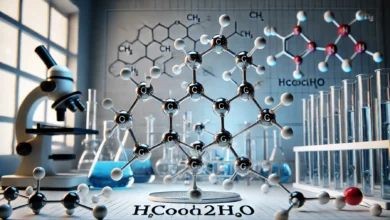TCB Scans: Revolutionizing Digital Imaging for Healthcare

Accurate and efficient diagnostic tools are crucial for patient care in the healthcare sector. Among these tools, imaging technology is essential in providing physicians with the necessary insights to diagnose and treat medical conditions. One such advancement in imaging technology is TCB scans. This article will explore what TCB scans are, how they work, their benefits, and their growing role in modern medicine. Additionally, we’ll answer some of the most frequently asked questions about TCB scans to help you understand their significance in healthcare.
What Are TCB Scans?
TCB scans are a form of advanced medical imaging technology that has gained significant traction in healthcare. The acronym TCB stands for “Total Body Scans,” which reflects the technology’s capability to scan and analyze the entire body or specific parts in high resolution. These scans detect various medical conditions, including tumors, fractures, infections, and other abnormalities.
The key feature of TCB scans is their ability to provide high-quality, detailed images of internal body structures. This allows healthcare providers to visualize organs, bones, blood vessels, and tissues clearly, helping them diagnose conditions more accurately and efficiently.
How Do TCB Scans Work?
TCB scans utilize cutting-edge imaging technology that combines advanced software and hardware to capture detailed body images. The process typically involves using a specialized scanning machine, such as a CT (computed tomography) scanner or an MRI (magnetic resonance imaging) scanner, depending on the specific requirements of the scan.
The patient is positioned on a table and then moves through a circular scanner that takes multiple images from various angles. A computer processes and reconstructs these images to create 3D visualizations of the body’s internal structures. This technology allows healthcare providers to view and analyze even the most subtle abnormalities in the body, providing them with the necessary data to make informed medical decisions.
Types of TCB Scans
Several different types of TCB scans can be used for various diagnostic purposes. These scans may vary regarding the technology used, the body part being examined, and the level of detail provided. Some of the most common types of TCB scans include:
- CT Scans (Computed Tomography): CT scans use X-rays and computer processing to create detailed cross-sectional images of the body. These scans are commonly used to diagnose brain, chest, abdomen, and pelvis conditions.
- MRI Scans (Magnetic Resonance Imaging): MRI scans utilize strong magnetic fields and radio waves to produce high-resolution images of soft tissues. They are particularly effective in examining the brain, spine, joints, and muscles.
- PET Scans (Positron Emission Tomography): PET scans involve injecting a small amount of radioactive material into the body, which helps detect areas of abnormal activity, such as cancer cells. PET scans are often used in oncology to assess the spread of cancer.
- Ultrasound: Although not typically categorized as TCB scans, ultrasound technology can also be used for detailed body imaging. It uses sound waves to generate images of organs and tissues and is commonly used during pregnancy or for abdominal and pelvic exams.
The Benefits of TCB Scans in Healthcare
TCB scans have become an indispensable tool in modern medicine due to their numerous benefits. These scans provide healthcare providers with vital information that can lead to earlier detection, more accurate diagnoses, and more effective treatment plans. Below are some of the key advantages of TCB scans:
1. Enhanced Diagnostic Accuracy
One of the primary benefits of TCB scans is their ability to provide detailed, high-resolution images of the body’s internal structures. This helps healthcare providers identify even the most minor abnormalities, leading to more accurate diagnoses. For example, a TCB scan can detect tumors early, allowing doctors to start treatment before the condition progresses.
In addition, 3D imaging and multi-angle scans allow for a more comprehensive view of the body, enabling providers to analyze organs and tissues from multiple perspectives. This enhanced diagnostic accuracy is essential for identifying complex medical conditions that may not be visible through traditional examination techniques.
2. Non-invasive and Painless
TCB scans are generally non-invasive and painless, making them an attractive option for patients. Unlike surgical biopsies or exploratory procedures, TCB scans do not require any incisions or invasive actions. This reduces the risk of complications and provides a more comfortable experience for the patient.
In most cases, TCB scans are performed outpatient, meaning patients can go home the same day without needing an extended hospital stay. This convenience makes TCB scans an appealing choice for healthcare providers and patients.
3. Early Detection and Prevention
One of the most significant advantages of TCB scans is their ability to detect medical conditions in their early stages. Early detection is critical in treating cancer, cardiovascular disease, and neurological disorders. By identifying issues before they become more serious, TCB scans help healthcare providers intervene earlier, improving patient outcomes and saving lives.
For example, TCB scans can detect early signs of a heart attack or stroke by identifying blockages or abnormalities in blood vessels. Similarly, these scans can reveal the presence of small tumors or cysts, which can be monitored or treated before they grow into more severe conditions.
4. Detailed Imaging for Complex Conditions
TCB scans are also invaluable for diagnosing complex medical conditions that may be difficult to identify using traditional methods. For example, TCB scans can be used to examine the soft tissues of the brain and spinal cord in great detail, making them particularly useful for diagnosing neurological conditions like multiple sclerosis, brain tumors, or spinal cord injuries.
Additionally, TCB scans can help evaluate joint and bone conditions, such as arthritis, fractures, or ligament injuries, allowing doctors to plan the most appropriate treatment.
The Role of TCB Scans in Cancer Detection
One of the most significant applications of TCB scans is in detecting and managing cancer. These scans are essential tools for oncologists to assess the presence, size, and location of tumors in the body. Early detection of cancerous growths significantly improves the chances of successful treatment, and TCB scans are at the forefront of this effort.
1. Identifying Cancerous Tumors
Doctors can detect tumors in their early stages using TCB scan, sometimes before they cause any noticeable symptoms. For example, a CT or MRI scan can identify small tumors in the lungs, liver, or brain, allowing for early intervention through surgery, radiation, or chemotherapy.
2. Monitoring Cancer Progression
TCB scan are also crucial for monitoring the progression of cancer after a diagnosis. Regular imaging can help doctors assess whether treatment is effective, track changes in the size of tumors, and determine if the cancer has spread to other parts of the body. This ongoing monitoring helps healthcare providers adjust treatment plans to maximize their effectiveness.
3. Assessing Treatment Effectiveness
Following cancer treatments such as surgery, radiation, or chemotherapy, TCB scan are used to evaluate the success of the treatment. By comparing pre- and post-treatment scans, doctors can determine if the tumor has been reduced or eliminated, allowing them to adjust the treatment plan if necessary.
FAQs About TCB Scan
1. What are the different types of TCB scan available?
There are several types of TCB scan, including CT (computed tomography) scans, MRI (magnetic resonance imaging) scans, and PET (positron emission tomography) scans. Each type has specific uses and is chosen based on the evaluated condition.
2. Are TCB scan safe?
Yes, TCB scan are generally considered safe. However, some types of scans, such as CT scans, involve exposure to a small amount of radiation. The benefits of the scan often outweigh the risks, but discussing any concerns with your healthcare provider is essential.
3. How long does a TCB scan take?
The length of a TCB scan depends on the type of scan being performed. Depending on the examined area, a CT or MRI scan may take 10 minutes to an hour. In some cases, additional time may be needed to prepare the patient or administer contrast agents.
4. Do I need to prepare for a TCB scan?
Preparation for a TCB scan can vary depending on the type of scan being performed. Some scans may require fasting or a contrast agent to help enhance the images. It’s important to follow your healthcare provider’s instructions for preparation to ensure accurate results.
5. Can TCB scans detect all medical conditions?
While TCB scan are highly effective at detecting many medical conditions, they are not infallible. Some conditions, particularly those involving very small or subtle changes, may not be detectable through imaging alone. However, TCB scan are modern medicine’s most powerful diagnostic tools.
In conclusion, TCB scan transform how healthcare providers diagnose and treat various medical conditions. From early cancer detection to monitoring the progression of diseases, these scans play an essential role in modern medicine. Their ability to provide high-quality, detailed images allows for early intervention and more accurate treatment plans, ultimately improving patient outcomes. As technology evolves, TCB scan will remain critical to the diagnostic process.
You may also read.
Procurementnation.com Shipping




